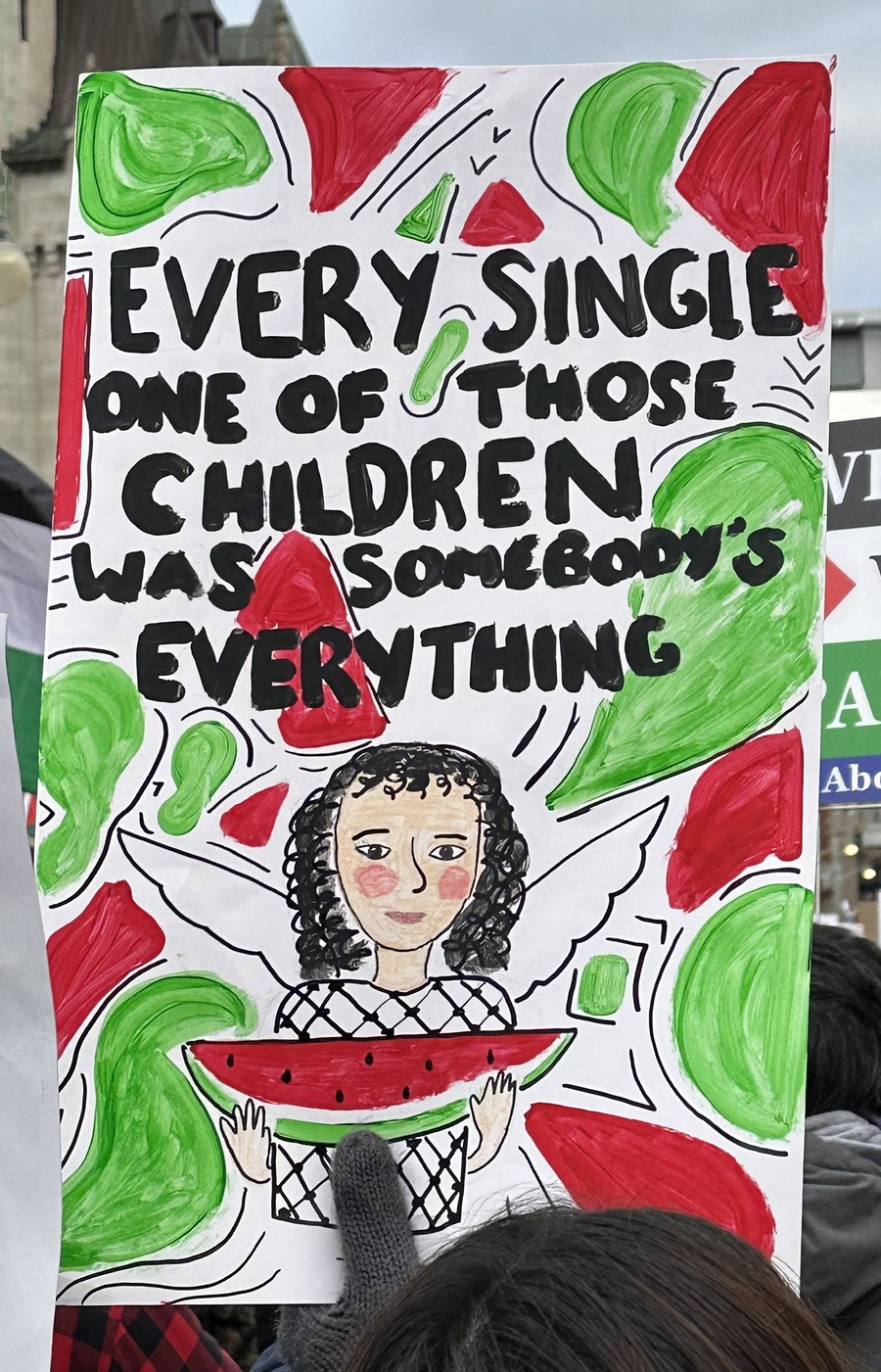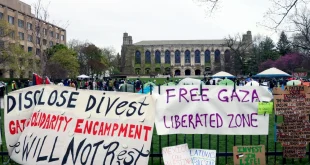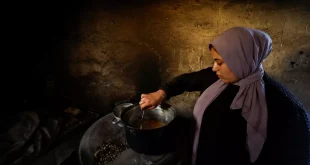Hamilton, November 5, 2023
More and more, watermelons are appearing on placards at demonstrations in support of Palestine. The fruit, symbol of Palestinian resistance and to protest the war in Gaza, has the same colours as the Palestinian flag and that of the Great Arab Revolt of the early 20th century: red, black, green and white. Similarly, social media users are displaying watermelon emojis instead of Palestinian flags to avoid having their accounts or videos deleted.
The watermelon has been considered a political symbol for decades in the Palestinian territories, notably during the first and second Intifadas, December 8, 1987 to September 13, 1993 and September 28, 2000 to February 8, 2005, respectively.
In 1967, in the wake of the Six-Day War between Israel and Egypt, Jordan and Syria, in which the State of Israel tripled its annexed territory, Israeli forces prohibited the Palestinian people from waving their flag in the occupied territories. The simple display, side by side, of the colours red, black, green and white was also banned. To circumvent the ban, Palestinian people began holding up watermelons, cutting them to expose their white rind, red flesh and black seeds on green skin.
A ban on the display of the Palestinian flag during the first Intifada ended in 1993 with the signing of the Oslo Accords. Following that signing, in 1993 the red, black, white and green flag was recognized as the flag of the Palestinian Authority, which was created to administer Gaza and parts of the occupied West Bank.
The watermelon as a symbol is also linked to food sovereignty in the occupied territories. During the first Intifada, the Israeli government prohibited Palestinian farmers from planting several types of seeds, including watermelon. Farmers instead planted hybrid varieties from Israeli seed companies. This, along with other conditions of the occupation, led to the near extinction of a local watermelon variety, Jadu’i, known for its disease resistance and adaptation to the microclimate.
The watermelon as a symbol saw a resurgence earlier this year. In January, Israel’s new Minister of National Security, Itamar Ben Gvir, ordered police to remove Palestinian flags from public spaces, saying their display constituted “support for terrorism.” Images of watermelons appeared during the marches. At a demonstration organized in Jerusalem in July, Israeli demonstrators carried signs with the colours of the Palestinian flag, a watermelon or the word “freedom.” In August, a group of demonstrators wore t-shirts bearing watermelon illustrations during a rally in Tel Aviv to protest Prime Minister Benjamin Netanyahu’s plans for judicial reform.
In the artistic world, the watermelon has also found its place. Here is an extract from “Ode to the Watermelon,” by Aracelis Girmay, a U.S. poet:
& in Palestine,
Where it is a crime to wave
The flag of Palestine in Palestine,
Watermelon halves are raised
Against Israeli troops
For the red, black, white, green
Of Palestine.
Forever, I love you your color hemmed
By rind.

 Left: Khaled Hourani’s work, The Colors of the Palestinian Flag, on display at Glasgow Contemporary Arts Centre in 2014. Right: artwork by Sarah Hatayet.
Left: Khaled Hourani’s work, The Colors of the Palestinian Flag, on display at Glasgow Contemporary Arts Centre in 2014. Right: artwork by Sarah Hatayet.


(24 heures, agencemediapalestine.fr, konbini.com, Le Monde, AP, AFP, Noovo, vice.com. Photos: Agence Media Palestine, Palstine Poster Project, G.R. Charania)
 Sri lanka Muslims Web Portal Diversity and Inclusiveness
Sri lanka Muslims Web Portal Diversity and Inclusiveness






